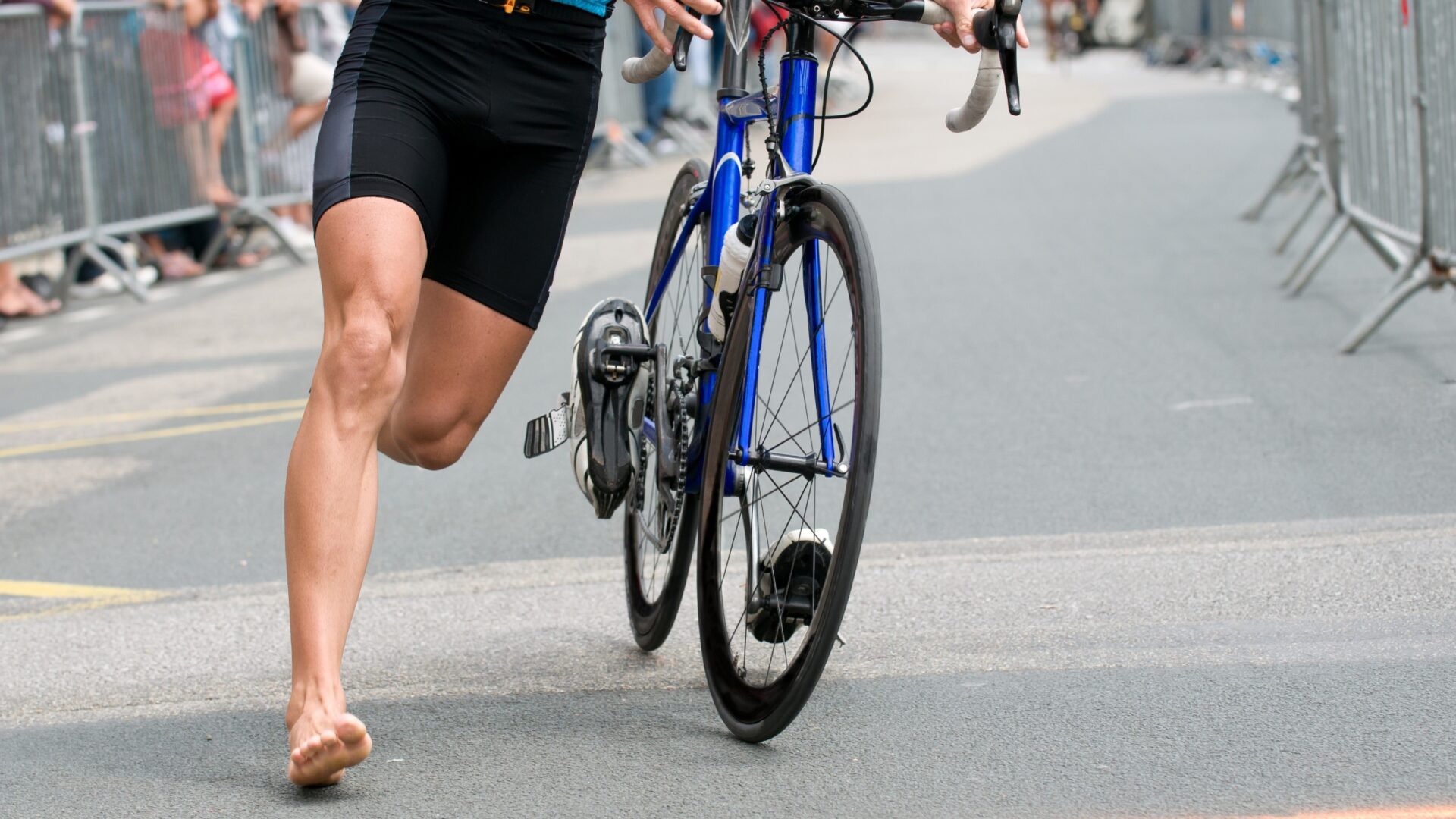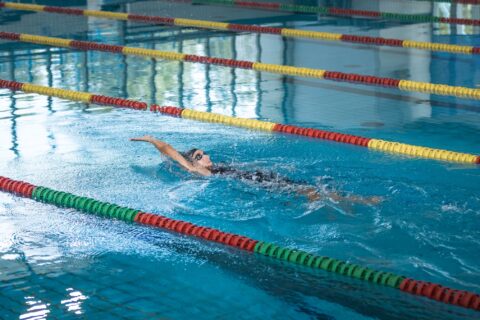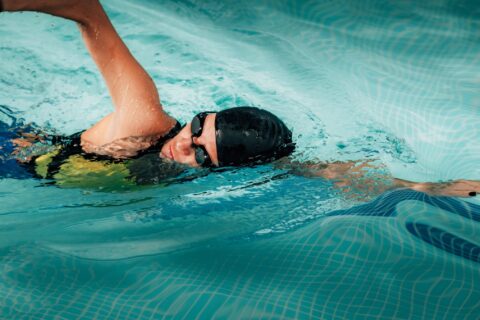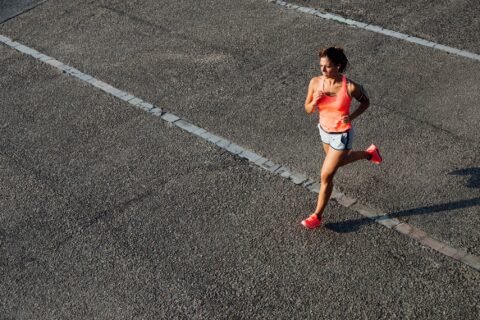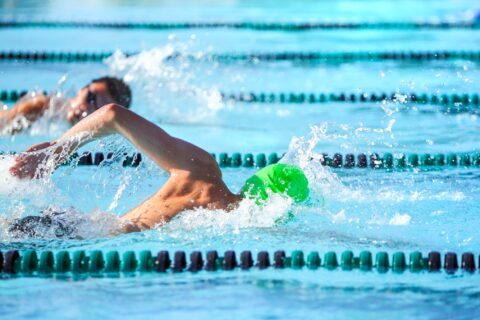Triathlon is made up of three sports: swim, bike, and run. But all triathlons also include a fourth element, and it is one that many athletes often under-prepare for and consequently concede valuable time in. That element is transitions, the part of the race during which a changeover is made from swimming to biking and then biking to running.
No matter what your attitude is toward triathlons, spending time practicing and preparing for the fastest possible transitions is something everyone should do. For those who are there to compete, efficient triathlon transitions often make a difference in the outcome of a race. For those who come to triathlon to just finish and enjoy themselves, transitions count toward the overall time and should never be underestimated as having the potential to ruin an otherwise enjoyable day.
Transitions should be considered part of the event and not a place to socialize or have a breather before embarking on the next leg of the race. Saving time there can pay off down the road. Here are my tips to making your triathlon transitions faster.
Minimize activities during transition
Triathlon transitions should involve the minimum number of steps required to get you from the swim to the bike and the bike to the run.
If you can identify activities that you do in transitions that do not need to be done there, then you have potentially identified some valuable seconds or minutes to save. For example, don’t change clothes, don’t eat, don’t put on sunscreen. All those things can be done elsewhere to make your transition much faster!
Run, don’t walk
Many athletes race very hard during the swim, bike, and run portions of a triathlon but then leisurely walk through the transition area. Transitioning is a part of the race, so treat it that way! Jog or run as quickly as possible to get where you need to go.
RELATED: Fast Talk Episode 99—Training Triathlon as One Sport with Three Disciplines
Know your way around
Athletes frequently waste valuable time during transitions trying to find their place on the racks. Knowing the layout of the transition area is invaluable in preventing this. When you rack your bike, look from where your bike is for the swim-in, bike-out, bike-in, and run-out entrances.
Before race day, walk to the swim-in entrance and identify exactly how to get to your bike. Walk from there to your bike and be sure you have a good mental picture for the big day. Now walk to bike-out and ensure you know the best route for that transition as well. Repeat this for the bike in back to your spot and for the run out.
On race morning, before leaving the transition area to start the swim, do one last check of all the directions just to be sure you have them down.
Set up your area
Another way that triathlon transitions can be made faster is simply by being more organized in how you lay your gear out. Start with a small mat or towel. You don’t need an acre to do transitions, so don’t try to take one up. This will endear you to your rack neighbors.
Since biking equipment is needed before running equipment, ensure that your bike shoes, helmet, and socks are laid out in front of your running shoes, hat, and belt.
Tips to get even faster:
- Put your socks on and roll them off your feet all the way down to your toes (or just above). That way when you come out of the swim with wet feet you just need to get them over your toes and roll them up the rest of the way.
- Consider not wearing socks for shorter races.
- Don’t change socks for the run (why would you need to?).
- Leave your bike shoes clipped into the pedals (when this is allowed). It is SO much faster to run through T1 with your stockinged feet than in bike shoes. You can use elastics to hold the shoes in place for T1 and you can leave the shoes swinging freely in the pedals when you get to T2. Be aware, it takes practice to mount the bike and slip into the shoes while pedaling, plus taking your shoes off while they are still clipped in and then dismounting. Go to an empty parking lot and practice both of those skills until you become proficient.
- Use quick laces for your running shoes. Any of the variety of elastic laces for running shoes makes putting them on a one-step process instead of going through the hassle of tying them. As a bonus, you don’t have to worry about your shoes becoming untied during the race, either.
Practice makes perfect
Finally—and I can’t emphasize this enough—practice your transitions. Doing this several times by incorporating T2 practice into brick workouts is a great way to get better at triathlon transitions.
For T1 practice, pull your wetsuit up to your waist (you should always be pulling your wetsuit down to the waist when you exit the water and start running to T1), then run a reasonable distance to your bike and practice taking it off and making the transition. A dry wetsuit will not act like a wet one, so it won’t be perfect, but it’s better than nothing.
These are several ways that you can work on triathlon transitions so that when your race comes around, you’ll shave seconds or even minutes off your time. Potentially you may see big movement in your placing and make gains without having to significantly increase the volume or intensity of your training. In an event that is measured against the clock, who wouldn’t want to do that?
